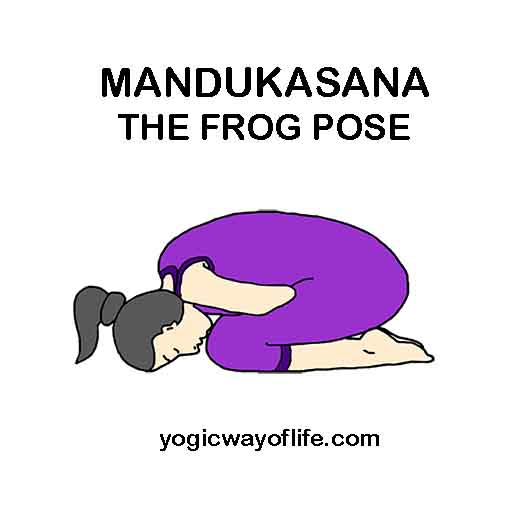Mandukasana or the Frog Pose tones all the organs in the abdomen and is excellent for diabetes. In Sanskrit, Manduka means frog and Asana means a pose. In the final position, the posture resembles a frog. Mandukasana has many variations, but here we mention the most popular version.
How to do Mandukasana (The Frog Pose)?
- Sit in Vajrasana or the thunderbolt pose. This is the simple kneeling posture.
- Make a fist with both hands with the thumb tucked inside the four fingers.
- Place the two fists on the abdomen on both sides of the navel.
- Exhale and pull the abdomen slightly inside. Slowly bend forward and press the navel with both the fists.
- Keep the back as straight as possible and look forward in the bend position.
- Keep the breath outside in this position and maintain it for as long as you are comfortable.
- To release the pose, inhale and slowly raise the trunk up to kneeling position, bring the hands back to the sides and relax.
- Repeat this for about 3 – 5 times.
Now let us talk of the benefits of this asana.
Benefits of Mandukasana (The Frog Pose)
- Mandukasana tones all organs in the abdomen including the stomach.
- It is good for the pancreas and has beneficial for diabetes.
- It can relieve constipation.
- It can reduce extra fat in the belly, waist and thighs and helps in weight reduction.
- Mandukasana improves digestive and excretory functions.
- It gives a good stretch to the back muscles.
- It can relive pain in the knees, legs and ankles.
Contraindications for Mandukasana (The Frog Pose)
- Those who have back pain should avoid forward bending asanas in general.
- Those who have any injury of the knees or hips should avoid doing Mandukasana.
- Mandukasana should not be done by pregnant women.
- If you had any recent surgery of the abdomen, chest, knees or legs, then avoid doing this pose

